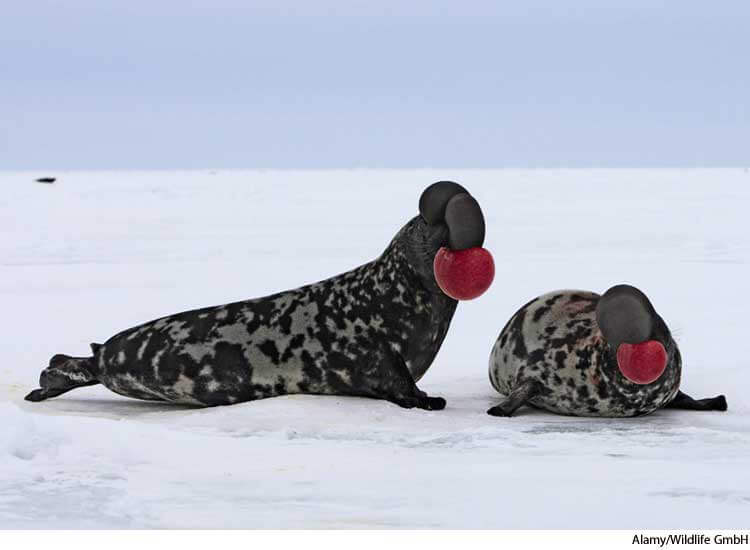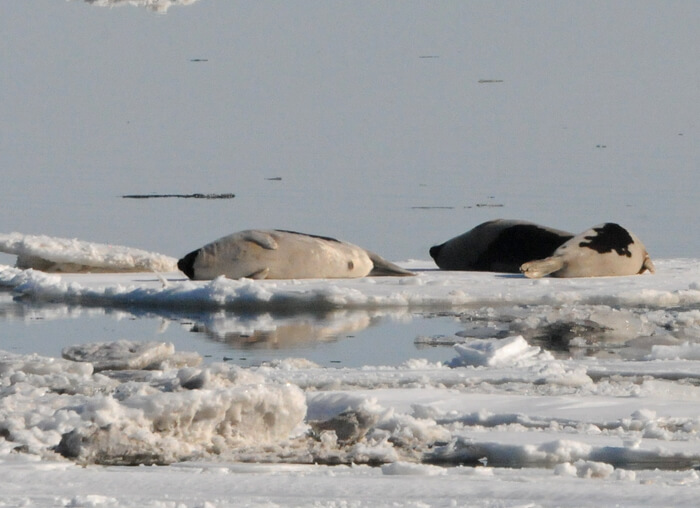While harbour seals frequent the waters of the St. Lawrence throughout the year, certain periods are more favourable for observing northern seals that overwinter in the St. Lawrence. But what should we know about these species that visit us in winter?
Hooded seal and harp seal
Did you know? The nursing period for hooded seals lasts just 4 days, during which the young seal will double its weight. This is the shortest duration of nursing observed in any mammal.
Northwest Atlantic hooded seals give birth in mid-to-late March in Newfoundland, southern Labrador, as well as in the southern Gulf of St. Lawrence and Davis Strait (between Greenland and Canada).
Pups are nicknamed “blue-backs” because of the slate-blue fur on their backs. After they are weaned and throughout the summer, it is not uncommon to observe them outside their range, including the Gulf of St. Lawrence and its Estuary. Young seals do not necessarily follow the same migratory route as adults. They eventually return to their breeding grounds at the end of winter.
Hooded seals are also known to be a particularly aggressive species, and you should exercise caution if you see one on the beach.
The harp seal’s range is similar to that of the hooded seal. In the calving season in March and April, they can be found in the Gulf of St. Lawrence around the Magdalen Islands, as well as off the coasts of Newfoundland and Labrador. Young are weaned in 12 days, followed by a 4-to-6-week moulting period on the pack ice. They spend the summer in the Arctic and then migrate to the south for the calving and breeding season.
In the next few months, you might be lucky to see blue-backs or young harp seals during your winter walks on the shores of the St. Lawrence. Although still young, the seals would already have been weaned. They will not be waiting for their mothers and will be on the beaches to rest. It is important to leave them alone and not approach them.
What should you do if you observe a seal on shore?
Bear in mind that it is normal for a seal to be out of the water on a rock, ice or on the beach;
+ Do not approach the animal; stay at least 50 m away;
+ Do not try to feed it; its survival depends on its ability to hunt fresh prey;
+ Do not attempt to coax it back into the water or spray it down;
+ If a seal grunts upon seeing a human, it is a sign that it is alert and is reacting to your presence. Consider it a reminder that you need to move away. They are capable of moving quickly and can be unpredictable. They are wild animals, and can bite and transmit diseases.
+ Keep your dog(s) on a leash, for both their well-being and that of the seal.
+ A shivering seal is not necessarily ill; seals shiver to generate heat. On the other hand, if a seal has visible injuries or other people are not following these instructions, please contact the Marine Mammal Emergencies immediately at 1-877-7baleine.







